There are 14 mobile home parks within the city of Santa Maria with more than 1,500 housing units. Each park differs in how it’s run and what amenities are included. Some of the newer parks in the city have nine-hole pitch-and-putt golf courses and pools, while older ones offer little more than a place to live.
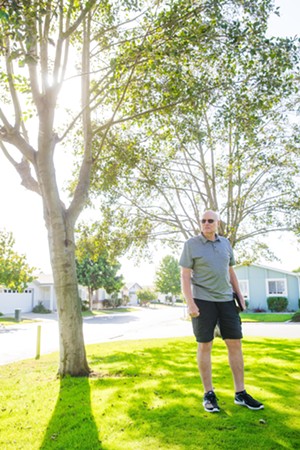
But all parks share a few similarities. Chief among them: Park residents own their homes and rent the space on which they sit.
Almost half of the city’s parks are reserved for residents age 55 and older, many of whom rely on Social Security to pay part or all of their bills. And the parks without age restrictions provide housing options for residents living on a lower income. Although the rent for lot spaces fluctuates between—and even within—parks, residents can often pay less than half of the average rent of an apartment in Santa Maria. According to RENTCafé, the average monthly rent for an apartment within the city in August 2019 was $1,673.
Over the last year, a group of residents has advocated to maintain this affordability. In October 2018, the North Santa Barbara County Manufactured Homeowners Team (NSBMHT) approached Santa Maria to make its case for why the city needs a form of rent stabilization for its mobile home parks.
“The manufactured-home owners of Santa Maria need affordable space rent and deserve protection from the continuation of past rent increase practices,” NSBMHT member Gary Hall said at a City Council meeting in November 2018.
Following Hall’s comments, Mayor Alice Patino directed City Manager Jason Stilwell to prepare an item to add to the council’s agenda. Since then, the city’s hosted six stakeholder meetings where mobile home park owners and residents have discussed and negotiated the terms of what the city calls an enforceable model lease.
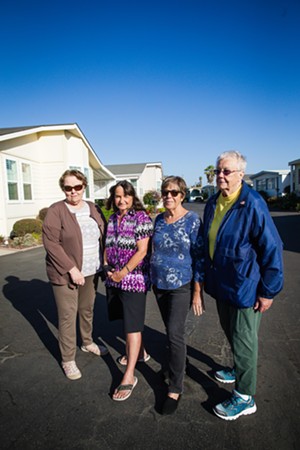
The effectiveness of these meetings depends on who you ask. Residents the Sun spoke with claim the process took too long and that the meetings favored the park owners. Stilwell routinely told council members that the city was making steady progress.
The last meeting took place on Sept. 25, which was followed by a closed-door meeting between city staff, Hall, and Lisa Toke, an attorney who represents the three largest mobile home parks in the city. A day after the meeting, City Attorney Thomas Watson sent Hall and Toke a copy of the final version of the enforceable model lease that Watson called “a fair compromise to all parties.”
Toke said the final document the city created represents a lot of give and take. Some of the terms reflect changes residents asked for, while some measures maintain what park owners requested.
“Are my clients thrilled? No,” Toke said. “But after all the time and effort we put into getting to this point, they would live with the terms.”
Hall isn’t thrilled by the lease either. Residents had bare minimum requests that weren’t met in the document, he said. Unless the city makes changes that are more accommodating to residents, they’re prepared to renew efforts to call for a rent control ordinance.
“We’re prepared to make that battle,” Hall said. “If there’s legitimacy behind what we asked for then we can’t just fold up the tent and go home because it got too hard.”
How the situation will play out likely hinges on the discussion City Council will have about the model lease when city staff presents it in November. Hall acknowledges that there could still be a long way to go.
Points of contention
This push is Hall’s first foray into the inner workings of city bureaucracy. He got involved after moving into his home in Rancho Buena Vista Mobile Estates on the north side of Santa Maria more than five years ago. About six months into his long-term lease, he realized he wasn’t happy with the terms and wanted to push for changes.
The primary concern is an annual rent increase.
In most leases, the rent increases annually by the same amount at which the Los Angeles-Long Beach-Anaheim consumer price index (CPI) increases. Most leases also have floors and ceilings, limits that implement minimum and maximum rent increases if the CPI falls below or exceeds certain amounts.
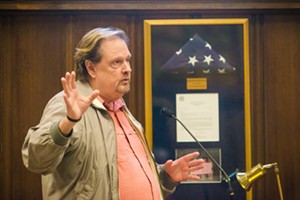
Santa Maria’s model lease consists of a 2.5 percent floor and a 6 percent ceiling. If the CPI increases by 1 percent, rent would still increase 2.5 percent. Likewise, if the CPI rises 7 percent, rent would increase 6 percent.
Toke—who represents Rancho Buena Vista, Casa Grande, and Casa Del Rio in Santa Maria, as well as other parks outside of the city—said these measures are frequently included in leases to protect both park owners and residents. The floor ensures owners can continue paying the same level of park expenses when the CPI dips below a certain point, while the ceiling keeps rent increases in check for residents during times of high CPI increases.
But some residents claim this floor can be an issue. Hall said the floor in Rancho Buena Vista’s existing lease, which expires this year, is 3 percent. According to the Social Security Administration, the last time a cost-of-living adjustment exceeded 3 percent was in 2011. However it came close to that mark in 2018, when it reached 2.8 percent.
Hall said he knows people who’ve sold their homes and moved elsewhere because they couldn’t keep up with the rising rent increases. In La Maria Mobile Home Park, Esther Jensen, who’s also a member of NSBMHT, said she has neighbors who often tell her that they’re struggling to keep up with the rent increases. Jensen said she’s not quite at that point, but she’s much more cautious about how she spends her money.
“I’m not to that stage yet, but I watch my expenses each month and see how much is going out versus what’s coming in,” Jensen said. “So far, I have been able to hang in a safe border.”
Toke said her clients are not at all dismissive of residents’ concerns regarding their fixed-income increases, but it’s a large, complex issue that exceeds the owners’ purview.
“We don’t ever mean to suggest that the hardships that residents are suffering—and frankly a lot of other members of our society are suffering—are not important, because they’re very important,” Toke said. “We just are trying to communicate the fact that those are not issues that are our fault.”
Additionally, Toke said that although she can’t speak for all park owners, her clients have always shown a willingness to work with residents experiencing down times and hardships.
Casa Del Rio owner Bob Hedley illustrated that point during the Sept. 17 City Council meeting.
“About four or five years ago, we had sent out our rent increase notices, [and] Social Security didn’t go up,” Hedley said. “So what we did was send everybody a notice and reduced their rent $10 a month for that year.”
Hall said the city has backed the owners’ stated need for a floor since the beginning of the stakeholder meetings, which he finds to be disappointing.
“Nobody gave us a floor when it came to cost of living allowance; we get whatever the number shows,” Hall said.
In addition to pushing for a model lease without a floor, residents requested annual rent increases be limited to 75 percent of CPI, instead of 100 percent. This means if CPI were to increase by 4 percent, for example, rent would only go up 3 percent. The request wasn’t included in the model lease.
Stilwell said that although the new model lease keeps rent adjustments at 100 percent of CPI, a different index is used to calculate a rent increase that’s more representative of Santa Maria. In July 2019, the Los Angeles-Long Beach-Anaheim index increased 3 percent, while the West-Size Class B/C index, which is included in the model lease, increased 2.5 percent.
The park owners pushed back on this change. Toke said the Los Angeles index has historically been used in the parks she represents.
Hall acknowledges this change in CPI is a victory for residents, but doesn’t consider it a step forward. He said it’s more of a correction of a past error.
“If you want to start accommodating, let’s talk about accommodations,” Hall said. “Getting back to fair isn’t accommodating, it’s just getting back to fair.”
As for including a floor in the lease, Stilwell said this measure was necessary to ensure that parks remain solvent because they’re an important source of affordable housing within the city. If parks aren’t solvent, a park owner could decide they want to do something else with that land, which doesn’t benefit anybody, he said.
“It’s in the city’s best interest that the [lease] agreement is in the interest of both parties,” Stilwell said.
Reaching an impasse
The debate over rent control for mobile home parks isn’t isolated to Santa Maria. It’s taking place throughout the state, said Dave Mullinax, the Central Coast’s regional public affairs manager for the League of California Cities.
With the affordable housing issues plaguing California, a lot of cities and counties are being forced to consider whether rent control measures are needed within mobile home parks. Two months ago, the Orange County Register reported that residents in Westminster asked their City Council to implement an ordinance to offset rent increases. According to the Mobile Home Park Home Owners Allegiance, there are 100 cities and counties across the state with some form of rent control or stabilization in place.
On the Central Coast, some cities and counties also have such an ordinance on the books. Although the details vary between jurisdictions, the cities of Lompoc and Santa Barbara, along with Santa Barbara County, have ordinances in place limiting rent increases to 75 percent of the Los Angeles-Long Beach-Anaheim CPI.
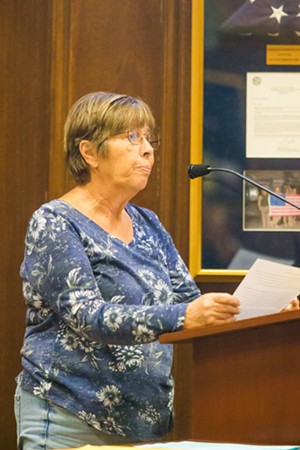
Lompoc Mayor Jenelle Osborne said the city’s ordnance has been in place since 1986. As far as she’s aware, the city hasn’t encountered any major issues or complaints from either the park owners or residents of the seven parks within the city.
Under the city’s ordinance, if a mobile home park owner wants to increase rent above the 75 percent limit, it triggers a hearing where the owner presents a case for why he or she needs to increase rent above this limit. It’s been almost 15 years since that has happened, Osborne said.
“The last time we had a hearing was 2005. It doesn’t happen that often,” Osborne said.
Last year wasn’t the first time residents in Santa Maria have asked City Council to consider some form of rent stabilization.
Two decades ago, a group of residents from Casa Del Rio approached City Council, claiming that their rent was being raised an excessive amount. After directing city staff to look into the issue, City Council again tasked staff with drafting a mobile home rent control ordinance for the council to vote on.
According to an Oct. 5, 1999, staff report, city staff brought back an ordinance modeled after Santa Barbara County’s that would have limited annual rent increases to 75 percent of the Los Angeles-Long Beach-Anaheim CPI. City Council ultimately voted against the ordinance 3-2. Instead, the city rallied behind the concept of a long-term model lease program that most of the major park owners in the city agreed to offer their residents.
The city acts as a facilitator and brings all parties together when it’s time to negotiate new leases at the city’s parks, which at the three largest is every 10 years. However, this model lease program has “no formal structure or ordinance,” according to a 2017 email from former City Attorney Gilbert Trujillo to NSBMHT member Ron Faas, which the Sun obtained through a public records request.
“The program is voluntary,” Trujillo said in the email. “The city cannot require all owners to offer a model long-term lease to their residents.”
Hall said the long-term lease program has been a failure because of this lack of enforceability. When residents first brought up this issue of rent stabilization in 2018, enforceability was a key term. And they were successful in securing enforceability in this new model lease.
Residents hoped they could find the relief they’re seeking by updating the lease program and adding an enforceability measure, but that no longer seems to be the case, Hall said. Park owners and the city are on board with the model lease being enforceable, but NSBMHT can’t sign off on the terms of the agreement.
After reaching what Hall calls an impasse, he and other NSBMHT members are ready to push for a rent control or stabilization ordinance.
At the Sept. 3 City Council meeting, Hall spoke about a draft of a rent control ordinance that NSBMHT has been working on in the event the model lease doesn’t produce the results the group is seeking. He plans to present it to the City Council at its Oct. 15 meeting.
“If we could get the perfect terms in our long-term lease, we’ve got the best of all words,” Hall said. “We’ve got the certainty … we’ve got the terms that help control our expenses—which is all we’ve really been after—without the handcuffed approach of rent control in its strictest sense because that really does tie the hands of the owner.”
Prior to the city releasing its final version of the lease document and residents’ subsequent decision to pursue an ordinance, Western Manufactured Housing Communities Association (WMA) spokesperson Jarryd Gonzales spoke with the Sun about what the organization sees as the difference between rent control and an enforceable model lease. The WMA represents mobile home park owners and operators throughout the state.
Gonzales said the WMA supports this model lease approach because it allows park owners and residents to negotiate leases, and in the event an agreement can’t be reached, the model lease can serve as an alternative. Meanwhile, he said, a rent control ordinance can create unnecessary tension between park owners and residents while not solving the core issue of building more affordable housing.
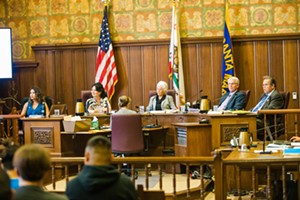
“WMA is vehemently against rent control,” Gonzales said. “In rent control, it would be an ordinance from the city. In a model lease, you still have the preferred option where residents and park owners are discussing and working out their own terms.”
Stilwell acknowledged that during conversations with residents, the city was told that some people prefer to have the option to work out their own leases with a park owner. Others said they liked the idea of having a model lease to fall back on, in case an agreement can’t be reached.
Hall said it could be true that some residents are happy with the current negotiation process with their landlords. However, he said, it could be equally true that residents don’t realize there are alternatives.
Critical juncture
Residents began discussions over the enforceable model lease late last year with a sense of urgency, as leases at the city’s three largest parks expire at the end of 2019. Those parks—Casa Grande, Casa Del Rio, and Rancho Buena Vista—hold more than half of the city’s mobile homes.
It’s been nearly a year, and Rancho Buena Vista resident Dan Swanson said this process is reaching a critical juncture. Swanson is a member of the lease committee at Rancho Buena Vista, and has advocated at City Council meetings for an enforceable model lease or rent stabilization.
Rancho Buena Vista residents have received their leases, but the timing of this and discussions over the model lease have left some residents conflicted over whether they should sign it. Swanson said he’s equally conflicted on how to advise residents facing this dilemma.
“Of course people have talked to me about their concerns,” Swanson said. “For me to tell them not to sign their lease, I think I’d be crossing the due diligence line.”
Residents at Casa Del Rio have also received their leases. In Casa Grande, more than 90 percent of residents have already signed new long-term leases, Toke said.
Stilwell pointed to the mass expiration of leases as a motivator behind the city wrapping up the stakeholder meetings and releasing the model lease. This gives residents who haven’t signed a lease yet the ability to weigh their options before signing, he said.
The timing bothers Hall and other residents affiliated with NSBMHT. Hall said park owners should have given residents more information about the model lease being discussed, or an option to retroactively sign the city’s lease agreement if the enforceability contracts are approved by City Council.
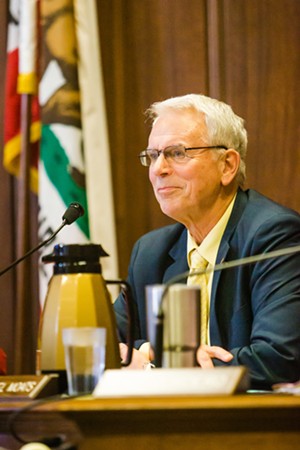
Toke said residents are free to make their own choices when it comes to signing their lease, and that the park owners didn’t influence residents’ decisions.
“We haven’t forced, tricked, or coerced people to doing something they don’t want to do,” Toke said. “Our belief is the people who have signed their leases have chosen to do so after evaluating the options available for them.”
She said her clients would never contemplate evicting a resident solely because he or she has an expired lease. It’s actually common for residents in mobile home parks to live on month-to-month leases, she said.
State law provides protections for residents who choose not to sign a long-term lease. Residents have the option to sign a one-year lease based on the same terms being offered, which leaves additional time to work out an arrangement. Or residents have the ability to go on a month-to-month basis.
At this point, Hall said he’s unsure whether he’s going to sign his lease.
City Council is adding to this sense of urgency by pressuring staff to bring forward the lease agreement for a public discussion. At the Sept. 3 City Council meeting—during which multiple residents spoke about the lease situation—Councilmember Michael Moats said he was getting anxious about the situation.
“What if you just brought the rent control from the county of Santa Barbara, see what they do, and make a uniform policy for the entire Santa Maria Valley?” Moats said. “Or just something, because I think peoples’ patience is wearing thin on this issue.”
Councilmember Gloria Soto told the Sun she’s also eager to discuss this matter, which relates to one of her main priorities as a council member: affordable housing.
“I’m really looking forward to having these discussions with my colleagues up on the dais and coming up with a solution that will ultimately protect the best interests of our residents,” Soto said.
It’s unclear what this discussion will look like. City staff is prepared to bring forward a model lease that’s been in the works for almost a year, but the residents who initiated this process are unhappy with the results.
Those residents are now prepared to push for a rent control ordinance, unless changes are made to the model lease. In the end, all Hall cares about is accomplishing NSBMHT’s goals.
“I don’t care what we call the mechanism that gets us to meeting our specified desires and objectives,” Hall said. “If it’s the model lease, great. If it requires an ordinance, fine. I told them in the [stakeholders’] meeting, we can call it ‘turtle soup.’ I don’t care … as long as we get what our objectives are.”
Reach Staff Writer Zac Ezzone at [email protected].








